 Nasty nasal parasite
Nasty nasal parasiteLog in using your username and password Main menu Log in using your username and password You are hereArticleSummaryOtolaringologists usually find strange nasal bodies, especially among children and patients with mental retardation. There are isolated reports that describe the removal of unusual strange bodies from the nose. However, no comprehensive reviews of this important issue have been published for many years. This article includes a detailed discussion of the different types of foreign nasal bodies, the various clinical presentations, management options and complications associated with foreign nasal bodies. Altmetric.com Statistics Several articles have been described in otolaryngology literature that describe unusual strange bodies removed from the nasal space and nasofaringe. No broad discussions on the subject of foreign bodies have been held on the nose. rarely the otolaringologist tracks the number and types of foreign bodies it finds. It is such a common entity that it is rare to pay so much attention to it. Foreign bodies in the nasal cavity, however, can be a great challenge and administration may require great skill. At first the diagnosis could be difficult. Unsuspected, a supurative or mucopurulent unilateral nasal discharge may suggest a number of possibilities other than a foreign body. On the other hand, the presence of a foreign body may be suspected but demonstrate that its presence may be a difficult task. There is a need for a high rate of suspicion so that more diagnostic manoeuvres can be processed before a label of "no foreign body" is printed in the case. Nasal foreign bodies can be found anywhere in the nasal cavity, although they are usually discovered around the floor of the nose just below the lower turbite (fig ). Another common location is immediately prior to the average turbite. These objects are usually placed by children or mentally retarded patients whose curiosity leads them to explore body holes. Any small enough item to be admitted to the anterior nasal hole has been removed, at one time or another, from the nose. Foreign agencies that have been affected or those that have been present for some time and have been embedded or those who have been forcefully affected often question the elimination. Live and mobile foreign bodies (such as worms and larvae) pose similar difficulties. Common sites of impact of foreign bodies on the nasal cavity (IT = lower turbine; MT = medium turbine; SS = sphenoid sinus; ST = upper turbine). A loose foreign object in the post-nasal space can be accidentally sucked or pushed into an attempt at elimination and can result in acute respiratory obstruction. Foreign bodies in the nose have been implicated as carriers of diphtheria and other infectious diseases. Thus, it seems that foreign agencies in the nose can create a real problem and should not be taken lightly. Foreign bodies are animated or inanimate. Inanimate foreign bodies: The list of objects that have been reportedly removed from the nose is infinite. The most identified foreign bodies include rubber drafts, paper vades, pebbles, beads, marbles, beans, safety pins, washers, nuts, sponges and chalk. Other authors have reported plastic, wood pieces, door handle, metal hooks and eyes, cloth pieces, bullets, spindles, shrapnel, umbrella springs, iron bolts, corks and coins. Endogenous materials such as bone and pieces of cartilage have been left behind in the nasal cavity after surgical intranasal manipulations. Trauma to structures adjacent to the nose such as orbits, paranasal sinuses, and palate can force bone spurs and cartilage fragments into the nose. Supernumerary teeth have erupted into the nose floor, presented as osteoma, and caused nasal obstruction. Alien foreign bodies The myiasis of the nose is common in warm tropical climates of the United States of the South and the Far East, including India, the frequency of infestation is mainly related to the poor hygiene of the inhabitants. The most common of all infestations is the fly worm. Screw worms, also known as "Texas" screw worms (which is the larval state ofCochliomya macellaria and theCochliomyia homnivorax, "the blow fly") are severe pests for humans and cattle. Therefore, a high incidence of human infestation in cattle breeding areas would be expected, but this does not seem to be the case. This indicates that the main factor in infestation is not livestock but the constitution and habitat of the host. The ordinary worm represents the larval stage of this blow fly. It only thrives in dead tissue and does not destroy living material. The ripe larva measures two thirds of an inch long and an eighth inch of diameter and has the characteristic appearance of a screw due to approximately l2 rings of thorns surrounding the body. The larva sinks into the living tissue and is at this stage of larval development that damages the nasal mucosal coating. The larvae of other flies, such as those of astrous, hypoderma and dermatobia, also invaded the nasal cavities. Wohlfahrtia magnifies can also infest the nose. These infestations occur more commonly in patients suffering from ozaena and nasal syphilis. Ascaris lumbricoides is a species of nematode or round intestinal worms and you will find accommodation in the nose when regurgitated or coughed. It is the most common intestinal helminth of man and often reaches epidemic proportions. Although it blooms better in warm and tropical climates, it is cosmopolitan in distribution. In temperate regions it is usually associated with low personal hygiene standards. Pathology Some foreign bodies are inert and can stay in the nose for years without mucous changes. However, most of the inanimate objects initiate congestion and swelling of the nasal mucosa, with the possibility of pressure necrosis producing ulceration, mucous erosion and epistaxis. The retained secretion, the broken foreign body, and the accompanying ulceration can result in ugly fetor. These changes further affect the foreign body due to the surrounding edema, granulations and discharge. This is particularly seen with strange plant bodies that not only absorb the water of tissues and swelling, but also evoke a very dangerous inflammatory reaction. Sometimes, the inflammatory reaction is enough to produce toxemia. A foreign body can act as a nucleus for concretion if it is strongly impacted or buried in the granulation tissue when receiving a calcium coating, magnesium phosphate and carbonate and thus becomes a rhinole. Occasionally this process can occur around an area of inspised mucopus, or even a blood clot. The rhinos usually form near the nose floor and are radio-opaque. Button stacks can result in severe destruction of the nasal sept. They consist of several types of heavy metals: mercury, zinc, silver, nickel, cadmium and lithium. The release of these substances causes several types of lesions depending on location, with an intense local tissue reaction and liquefaction necrosis. As a result they can cause septal perforations, sinechiae, constriction and nasal cavity stenosis. Worms and screw worms in the nose initiate inflammatory reaction degrees from a mild localized infection to the maximum destruction of the nasal bones (both cartilageous and bony) with deep and stinking suppurant cavern formation. The larvae hatch in these caves and a new cycle is repeated. Symptoms and signs A unilateral mucopurulent nasal discharge with folic odor is the most consistent finding in patients with a foreign nasal body. It can occasionally be stained with blood. The resulting unilateral vestibulitis, specific to the pediatric age group, is diagnosis (fig ).Unilateral vestibulitis in a child -diagnosis of a foreign body in the nasal cavity. Nasal foreign bodies are usually indolorous. In fact, some foreign bodies have been present in the nasal cavity for years without symptoms. However, there has rarely been headache and pain on the side involved with intermittent epistaxis and sneezing reported by others. There have also been published cases in which bromhidrosis (bolic body odour) associated with foreign nasal bodies in children are described. In patients with animated foreign nasal bodies, symptoms tend to be bilateral. Nasal occlusion, headaches and sneeze with serosanguinous discharge are usually the symptoms they present. There is an increase in body temperature and an unpleasant fetide smell emanates from the nasal passages. Leucocytosis is derived from the accompanying secondary infection. The nasal cavity test can reveal an extensive destruction of surrounding mucous membranes, bone and cartilage and mucous membranes are fragile and bleeding easily. You can watch constant movement and masses of different worms. These worms are firmly attached and difficult to extract. Due to secondary infection and bone destruction, complications are not common. The rhinols are initially without symptoms and then cause nasal obstruction only if enlarged. The nasal cavity test shows a grayish irregular mass, usually along the nose floor that feels bonia, hard and funny in the testine. X-ray usually confirms the diagnosis and reveals the extent of the rhinole. Any patient who has a unilateral nasal discharge should raise the suspicion of a foreign nasal body and in children this should be considered the case until proven otherwise. The physical examination of the nose involving the previous rhinoscopy and the use of a nasopharynoscopy or a rigid endoscope of 0 degrees will often reveal the foreign object. However, sometimes mucous edema or granulations tend to hide it. In such cases the nose should be sprayed with a vasoconstrictor agent to reduce the mucous before re-examining. Many times the foreign body becomes evident with this manoeuvre. In younger or very apprentice children, it may be necessary that the search be performed under a general anesthesia. In patients with parasitic infestation and larvae of the nose diagnosis is relatively easy as the organisms are visualized directly. Several unilateral lesions found in both children and adults can cause obstruction of the side involved. These lesions would include benign and malignant nasal cavity tumors, unilateral sinusitis, unilateral coanal atresia, unilateral nasal polyps, septal haematoma and infections such as syphilis and diphtheria. Management A cooperative patient is needed to successfully detect and remove a foreign nasal body. The patient is usually examined in the right seat position for routine otorrinological examination. A child may be better examined by leaning the head back slightly so that the nose floor is visible to the examiner. For this, an adult may need to hold a child and keep his or her head firm. Most of the foreign bodies inanimate, if well visualized, can be easily removed through the previous naps with the use of cube-forming, haemostats, curved hooks, eustachian metal tube catheters and suction. This can be done either without anesthesia or after spraying with a local anesthesia solution, typically acting as 4% lignocaine (lidocaine). The elimination of a rounded object can be a challenging task due to the difficulty of grasping foreign bodies in this way. A curved hook is the best suit for this job. The hook passes first behind the object, the tip rotates to rest right behind it and then the foreign body is gradually drawn forward and out through the nose. In addition, several suction methods have been described which contribute to the elimination of the round foreign bodies. Plastic objects and plant matter can be difficult to extract due to their tendency to break into small pieces. However, it cannot be emphasized that unskilled attempts to eliminate the foreign agency in accident and emergency departments by a person without adequate training can result in disasters. The foreign body can be moved backwards and even reach nasofaringe with a risk of inhalation. In a crying child the foreign body while withdrawing from the nose may fall into the mouth with calamitous effects. Marked epistaxis may occur or a docile child may be terrified and require a general anesthesia, which otherwise may have been avoided. In cases where the expulsion of a foreign body is particularly difficult, several alternative procedures have been described. If the patient can co-operate, he can be instructed to breathe deeply through the mouth and then exhal by force through the nose. The attending doctor should oclude the uninvolved nose during this procedure. If the patient is not able to cooperate with this maneuver, the ventilation from mouth to mouth can be given to the patient by the doctor, occluding the non-involuntary side again. Both the success rate and the incidence of complications associated with the above-mentioned procedures are not well informed in the literature. Learning Points There are several points to be emphasized when it comes to foreign nasal bodies: Foreign nasal organisms are commonly found in emergency departments, particularly among children and patients with mental retardation. Diagnosis should be entertained in any patient who has a persistent unilateral nasal discharge. Nasal foreign bodies are inanimate objects or, less commonly, animate. Successful diagnosis and treatment of foreign nasal bodies depends on a careful examination of the nasal cavity and its adjacent structures. The qualified medical staff in the technique of eliminating foreign nasal bodies must be involved from the beginning. Due to the lack of cooperation of patients and the occasional difficulty in the extraction of foreign nasal bodies, the general anesthesia should be considered if there is any question that arises regarding the adequacy of the nasal examination. An additional method described by some authors is the use of a Foley catheter or a Fogarty bibiliary catheter for the elimination of foreign nasal bodies. After ensuring that the balloon is intact, the catheter passes to the nose beyond the foreign body. The balloon inflates with 0.5 ml of water. The catheter is removed again through the nose, pulling the foreign body in front of the balloon. On rare occasions, the only successful method of removing a foreign nasal body is to push the object later to the faringe. In these cases, general anesthesia is required and endotracheal intubation is performed to protect the airway. Different techniques are used for the elimination of animated foreign bodies. In the case of screw worms, larvae and worms, a weak solution of 25% chloroform is instilled in the nasal spaces to kill larvae. This may have to be repeated twice or three times a week for about six weeks until all larvae are killed. After each treatment, removal can be achieved by blowing the nose if the patient is awake and by suction, irrigation or healing if the patient is asleep. With manual Ascaris lumbricoides or the extraction of forceps is used thus avoiding the need to kill these worms before removal. However, the slices that lodge in the nose present only a part of the heavy intestinal infestation that has to be eradicated to prevent the subsequent nasal allocution. Oral levamisole or mebendazol can be used for this. After the successful removal of a foreign nasal body, a careful examination of the nasal cavity involved, as well as of other bodily holes, should be performed to exclude the presence of other unrecognized foreign bodies. Special attention should be paid to the examination of the ear and breasts on the side involved, as the means of acute otitis or sinusitis are commonly seen if the foreign body has been present for any time. In addition, there is a need to properly treat the existence that usually accompanied the elimination of foreign nasal bodies. Several important complications have been associated with the presence of a foreign nasal body. These include the formation and development of rhinos, erosion in a contiguous structure and the production of infections in the surrounding structures. Apart from acute sinusitis or otitis media, other reported infections include periorbital cellulite, meningitis, acute epiglotis, diphtheria and tetanus. Acknowledgements The authors wish to thank Mr. G S Kenyon, Consultant Ear, Nose and Throat Surgeon for their written guidance this manuscript and Ms. Ross Doyle for secretarial services. ReferencesRequest permits If you wish to reuse any or all of this article, please use the link below that will take you to the RightsLink service of the Copyright Settlement Center. You will be able to get a quick price and instant permission to reuse the content in many different ways. Copyright Information: Read the full text or download the PDF: Sign in with your username and passwordOnline: ISSN 1469-0756Print: ISSN 0032-5473 Copyright © 2021 Postgraduate Medicine Fellowship. All rights reserved. 4.00ICP sponsors15042040 forwarded-3
Follow us User or e-mail* Password * There are monsters... living in the human body... There are monsters... living in the human body... - What? This BLOG preserves a true heritage story that is offered for the audience and suggestions, with the patient's experience. Deposits and images of this case, a parasitic case, can be great. How does Sky feel about getting our thing? Today, during a sunny afternoon, Christmas came the South Wind, that's right: When we left Miami for the first time for Haiti, we left behind 5 pallets of drugs and additional supplies that we could not fit on board. We plan to go back to Miami and pick them up after finishing in Haiti, and then continue to Central America. From Haiti, we connect with Clinica Esperanza and Barefoot Cay Marina in Roatan, learning to work with composites during a helmet repair, we came directly here instead of returning to Miami. We saved a lot of fuel and time, but it meant we had to send our pallets here to Roatan. Fortunately, Gary and Donna Evans organized for Roatan Rotary Club to sponsor the shipment by providing part of the annual donated shipment of Rotary from Hyde Shipping here on the island. We also had to coordinate someone willing to drive a truck from the warehouse in Miami that was kind enough to keep our supplies in the warehouse of Hyde Shipping in Miami... all the time seeing patients, planning our mission in Haiti, feeding, securing the boat for the sea, coordinating our 40-foot container of Direct Relief International for the clinics of the island and for Haiti. It was BUSY. Baby cots for moms in the hospital's pediatric pavilion...They sleep on the tile floor Next to your child's crisisHowever, medical care is always our main mandate, and when we are in danger of being overwhelmed by everything we have to do, we ask for help. Especially any doctor who reads this, this patient has suffered significant symptoms for months and has given permission to publish your case for review by any of our medical followers. Please post comments or questions for more details on the case directly on this page where we can all see them and put together the storm. All posts are visible only after review and approval by floating doctors to protect the dignity and confidentiality of the patient. Patient: 27 years Caucasian man; 6'2", 180lbs*No previous medical history, no medications, no allergies*Basic exam:The patient had spent 7 months in Honduras working as a voluntary co-driver in a non-profit emergency helicopter service, with frequent trips to the continent while transporting patients. If this is a worm, what is it? 3 months ago, a few weeks before his return to the United States, he had complained of occasional vague stomach cramps (sometimes acute) and diarrhea. The night before returning to the U.S., he took a single dose of albendazole and later had what he referred to as an episode of extreme cramp and "worm explosive diarrhea." The worms he described were 6-8 inches long and very similar to mucous. He continued to take a daily dose of 400 mg of albendazole during the next few days, but he continued to pass similar worms. It went with a strict diet of fruits, removed fats and although the symptoms seemed to decrease, still passed chains of worms, somewhat longer than 12" (in the first days of treatment). After several days, he went to his local doctor and later sent this email: "I went to the doctor yesterday and received a scrip for Flagyl. I never saw the doctor but the nurse. One of the Strands of Worm-Like The Hsas Patient has been going over to doc and prescribed it. I've been on it for, now, two days. I'm coughing up something terrible. Once (in the last week), while in the shower I turned my nose into my hands. In the mucus there seemed to be a worm of about 1/2 inch. Or it was a worm or the most congellous mucus I've ever seen. From now on I was exhibiting symptoms of hypochondria, I threw it like my mind playing tricks about me. Today, about a week later, after taking the Flagyl for two days, I'm coughing something horrible, which seems similar, but not exactly the same, as the worms on my stool. It's rope, if it stretches about 6-8 inches long. As far as I've seen, the mucus is not usually so strict with elastic properties. When running the washbasin full of water, turning one around rinsing it, and then picking it out of the water with my finger, it will run on my finger as if a spaghetti sink. It does not look like a spaghetti noodle, (much smaller in diameter) but acts in a similar way when one is executed on your finger. "He increased his treatment with Pyrantel Pamoate equine anthelmintic, taking the same dose as for a daily pony 250-lb (900mg) for three days free 4 days, then repeating, and also mebendazole 100mg was prescribed twice a day for three days, then 4 days off, then repeating the regime for a month along with the flagelo (melence). He also ate huge amounts of fruit and had a colonic irrigation (although he did not see worms coming out during the evacuation only the next day), and is taking 15,000 mg of garlic daily. He has not had blood work or ova study and parasites (stool sample). You have been advised to collect one of the worms and take it to your hospital or GP for parasitology, and have a complete blood count with differential to look for elevated eosinophiles. The results will be issued as soon as available. Dead and partially necrosated? What? The imagined 'worms' don't look at anything typical. Could they be some type of mocous of the post-intestinal infection or the treatments that have been given... Even garlic? If so, what about coughing and similar episodes, little mucous chains of your nose? He's tried most of the heavy obstacles to parasites... even horseworm medication (not on my advice!). Does anyone recognize them as worms or other pathologies, or have suggestions for further treatment or research? The patient does not have health insurance, so the cost will be a factor in the patient's ability to perform the research. Bringing the worm to a doctor so that it can be sent to a specialist and analyzed if necessary is definitely the next step, but any advice or ideas would be appreciated. Our 40-foot Direct Relief container is supposed to be cleaned through Customs Thursday! Waiting at the customs office Then we can distribute everything, load the boat and exit in the first meteorological window to Jamaica for fuel and return to Haiti! All photos (Except 3 Worm Pics) Courtesy of Dan Chomistek Share this: Thus: RelatedRelated Posts As we close August and what feels like the million months of quarantine of How is it in mid-August? With the way we're going to give everyone a way to break the facial touch rule We have compiled a list of places "It is not the strongest of the species that survives, nor the most intelligent Earlier this month, you were mocked with an image of Jonathan, a very sweet child Our 2019 End Clinic... by Gaurav Sikka, Doctors Fleet Lead Medical Provider Final clinic of the floating doctors by Jill Patel Jill Patel joined us as a global health student at Dr. Kevin Lan, Dental Director "You can never cross the ocean unless you lose sight As the last days of the year end, I have been given a volunteer Trisha In "Be compassionate with the weakest, for the odds of silver and gold
So I just coughed this up, it's not phlegm and I could stretch it like an elastic band. WTF is it? : WTF
Rope Worm: Intestinal Parasite or Mucus Buildup?
Worm like mucus in nose. Worms in nose sinus
A Bothersome 'Nose Hair' Might Be A Worm
There be monsters…living in the human body…. – Floating Doctors
Coughing up worms, what could it be?
Human lagochilascariasis—A rare helminthic disease
12 Parasite Symptoms and How to Fight Them - Microbe Formulas™
The Mucus-Shooting Worm-Snail That Turned Up in the Florida Keys - The New York Times
There be monsters…living in the human body…. – Floating Doctors
Parasites in Your Nose (Page 1) - Line.17QQ.com
Worm like mucus in nose. Worms in nose sinus
Parasites in Your Nose (Page 1) - Line.17QQ.com
Dried nasal mucus - Wikipedia
Coughing up worm like mucus
Mucus plug? - May 2020 Birth Club - BabyCenter Canada
Pin by ThatPhunkyBitch on Pair a site info | Parasite cleanse, Parasite pictures, Ear health
Occurrence of tongue worm, Linguatula cf. serrata (Pentastomida: Linguatulidae) in wild canids and livestock in south-eastern Australia - ScienceDirect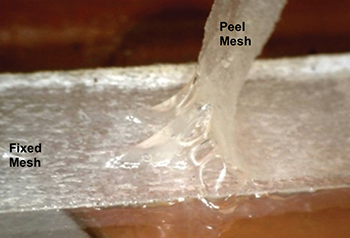
For coughing up phlegm, water is key | Science News for Students
Parasites in Your Nose (Page 1) - Line.17QQ.com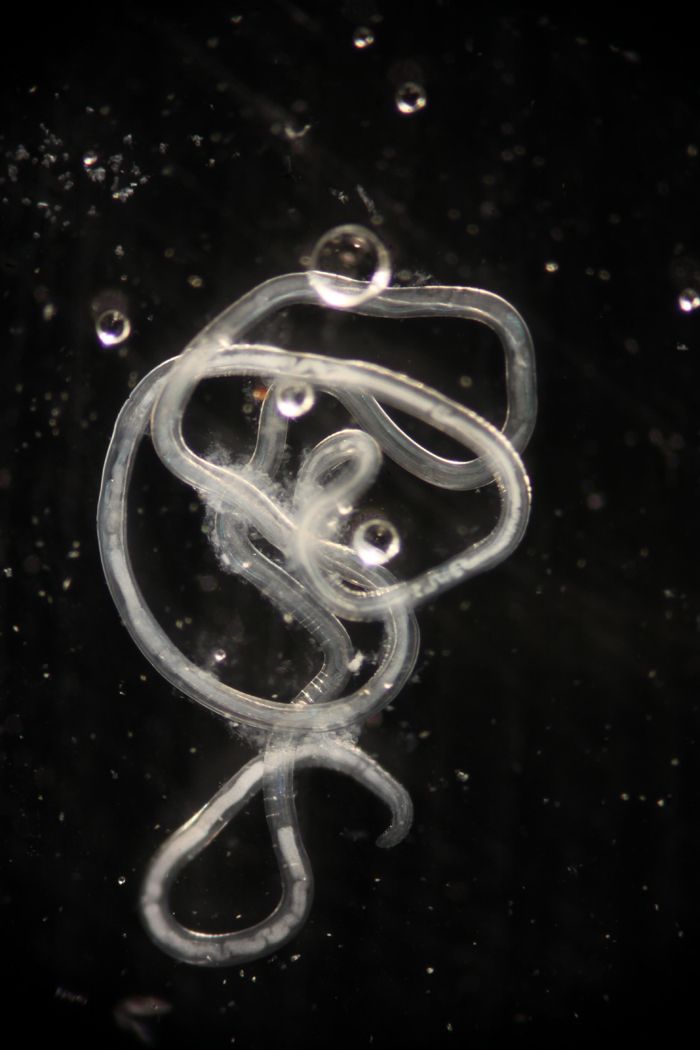
It's 3 a.m., Is that a Parasitic Worm in Your Cheek? (Op-Ed) | Live Science
Rope Worm: Intestinal Parasite or Mucus Buildup?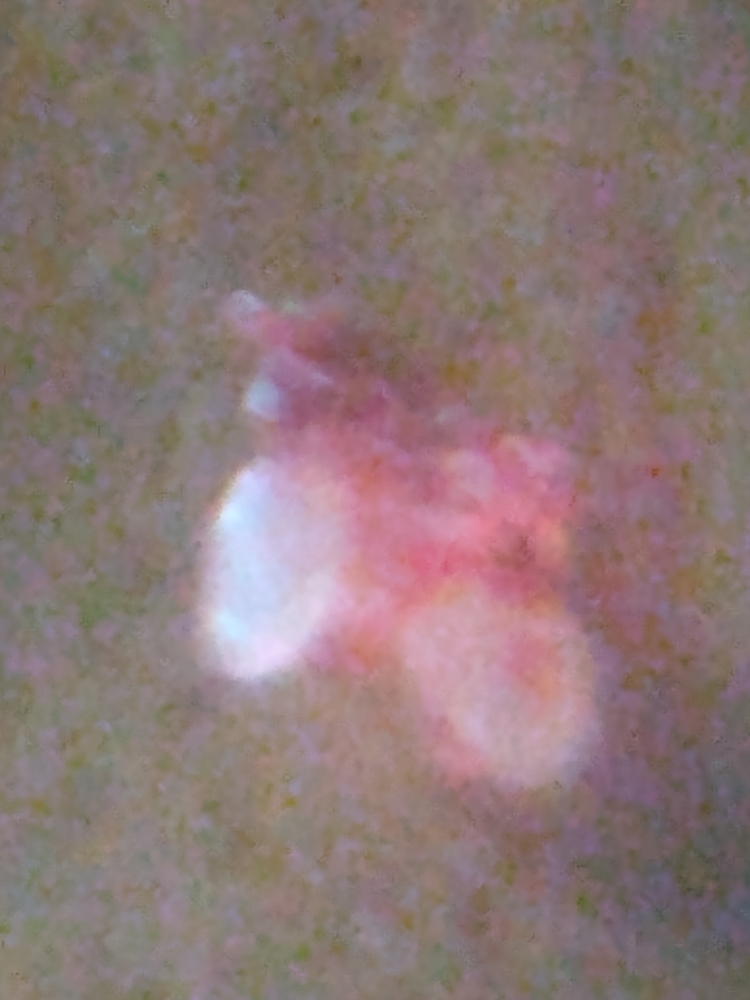
Worms in the Face | Infectious Disease | Forums | Patient
Foreign bodies in the nasal cavities: a comprehensive review of the aetiology, diagnostic pointers, and therapeutic measures | Postgraduate Medical Journal
There be monsters…living in the human body…. – Floating Doctors
This tube worm's glowing slime may help sustain its own shine | Science News for Students
Gongylonema pulchrum - Wikipedia
How to Clean Your Sinuses : 4 Steps (with Pictures) - Instructables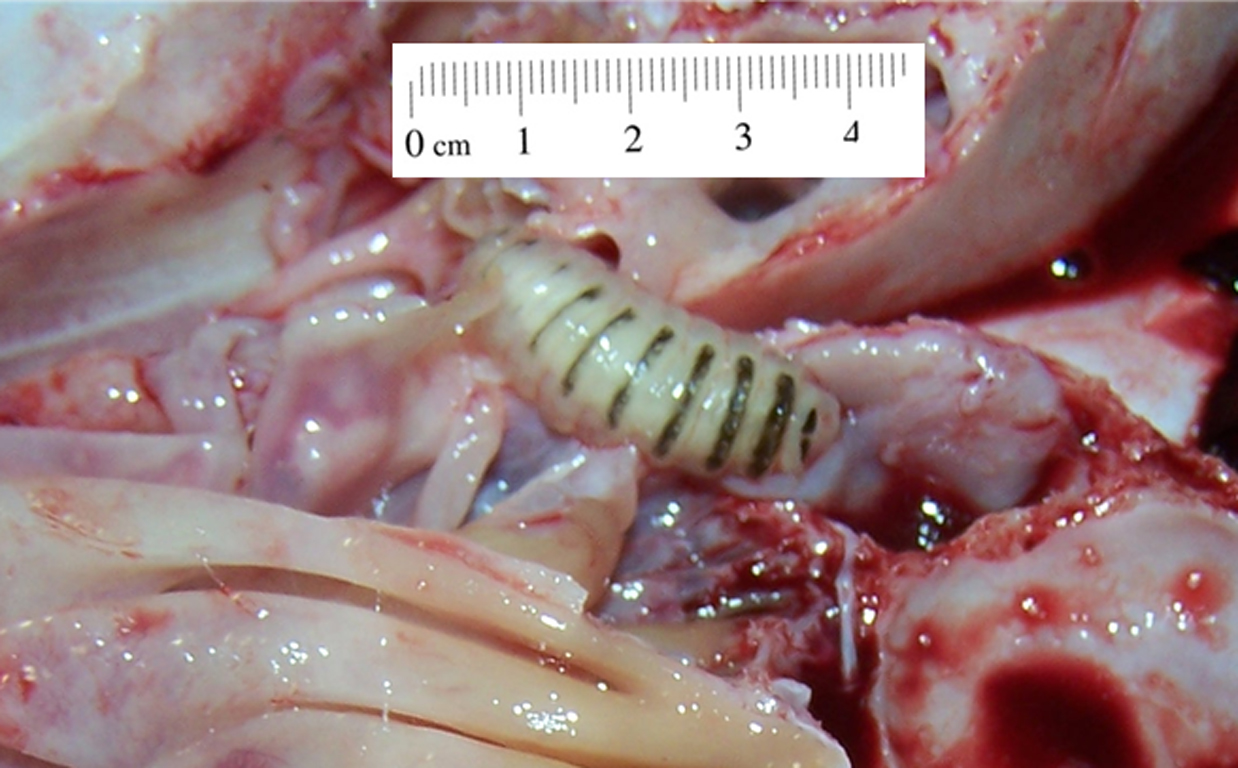
Nasal bots in sheep | Agriculture and Food
Parasites: See What's Eating Your Skin
Turkey diseases - St David's Poultry Team
Internet Scientific Publications
A Bothersome 'Nose Hair' Might Be A Worm
Nasty nasal parasite
Update on parasitic dermatoses - ScienceDirect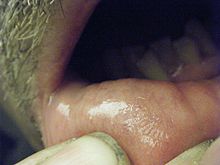
Gongylonema pulchrum - Wikipedia
Meet the menagerie of parasites that can live in human eyes | Popular Science
Parasites: Types, in humans, worms, and ectoparasites
Intestinal Nematodes (Roundworm) - Infectious Disease Advisor
Copd Can't Cough Up Mucus - Kronis g
 Nasty nasal parasite
Nasty nasal parasite































Posting Komentar untuk "worm like mucus in nose"